
What Are The Five Red Flags of Avalanche Danger
Backcountry skiing involves skiing in unpatrolled and unmarked areas outside of a ski resort. Venturing outside of a ski resort boundary poses significant risks, as there is no avalanche mitigation in backcountry terrain. Anyone skiing, splitboarding, or snowshoeing in the backcountry should be aware of the warning signs of an avalanche to stay safe while skiing in these areas. Here are the five red flags of avalanche danger that backcountry travlers should know:
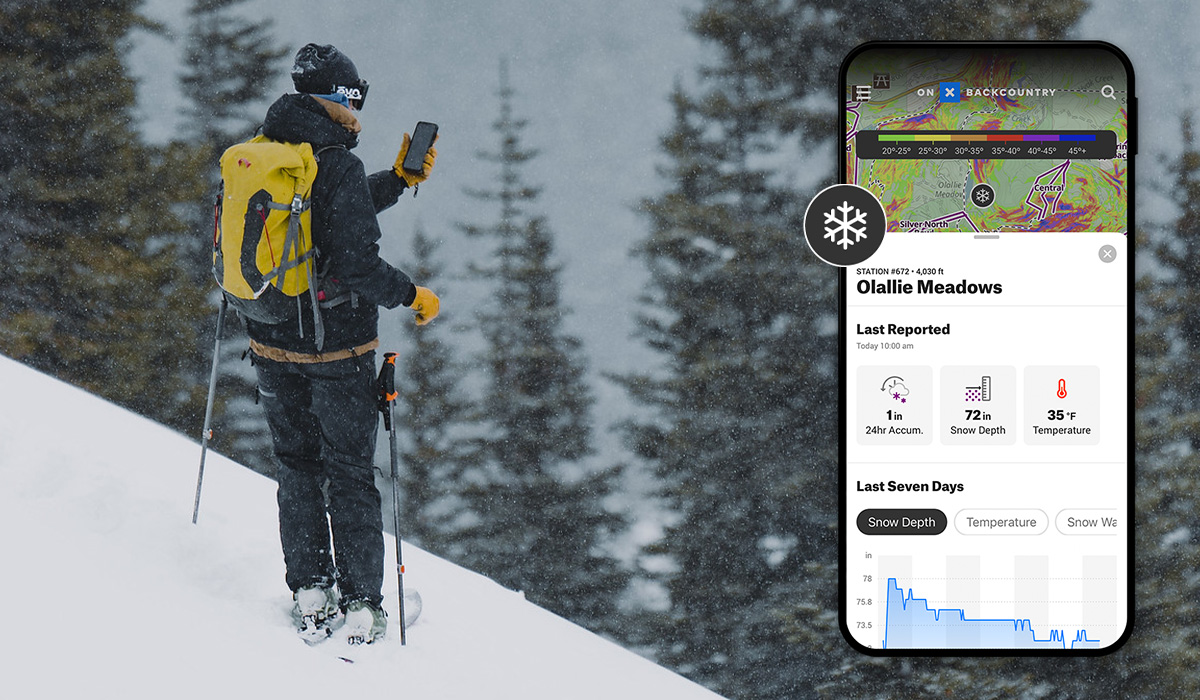
Recent Snowfall
The first red flag of avalanche danger is recent snowfall. When fresh snowfall accumulates on top of an existing snowpack, it can create a weak layer that can easily break and slide. The weight of the new snow can also overload the snowpack, making it more susceptible to avalanche activity. 90% of human triggered avalanches happen during or within 24 hours after a storm, so knowing how much it snowed in certain areas can help you anticipate the conditions you will face in the backcountry.
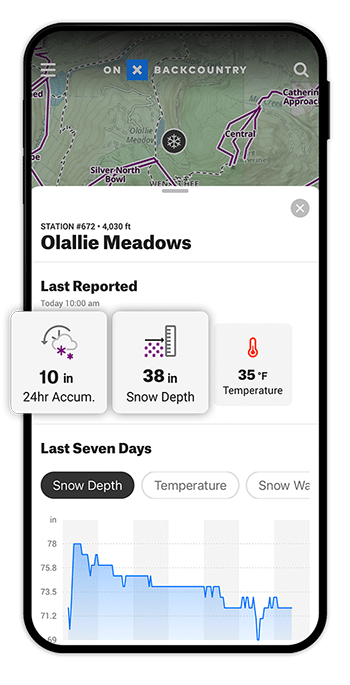
Use onX Backcountry to view SNOTEL stations to show you how much snow has fallen in the last 24 hours in your zone. This will give you a better idea of how much snow has fallen recently, and what you will experience when you’re out in that zone. To view SNOTEL stations in the onX Backcountry app, navigate to your zone and look for a snowflake icon. Click on it to reveal 24 hour snow totals as well as current snow depth and more. SNOTEL information can also be found in the Guidebook data in the app.
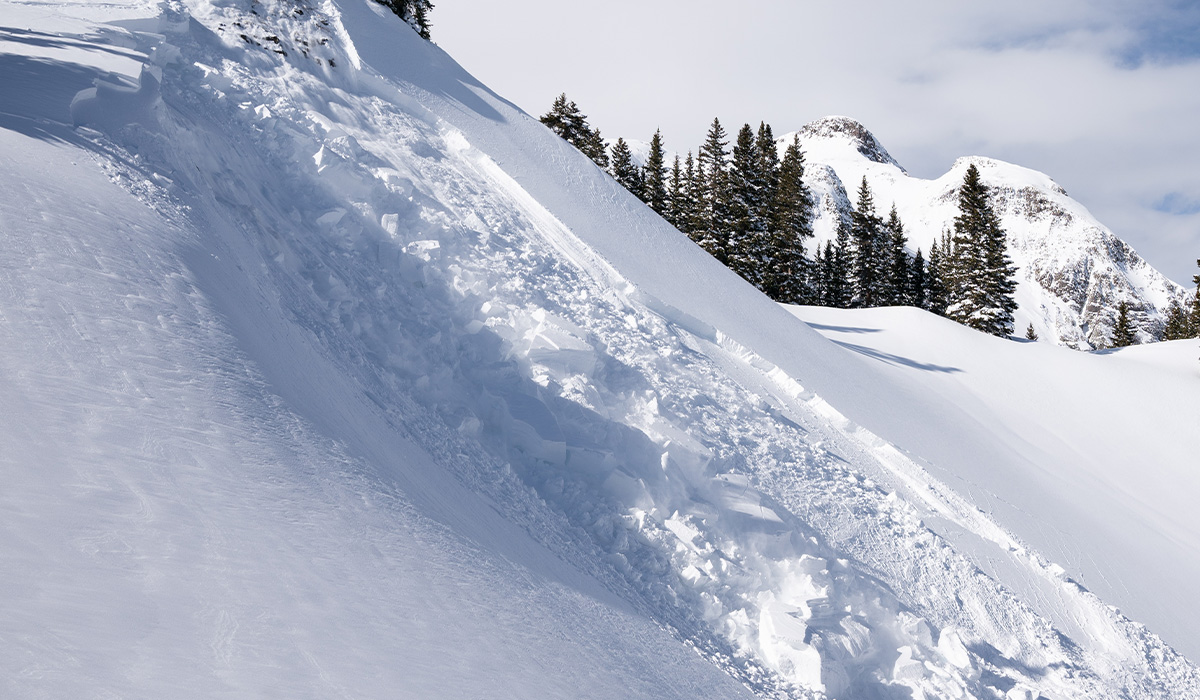
Signs of Recent Avalanches
Another red flag of avalanche danger is the presence of signs of recent avalanches in the area. If you notice fresh avalanche activity, such as a debris pile at the bottom of a slope or crown lines, this is a sign that an avalanche has already occurred, and the conditions may still be unstable on similar aspects.
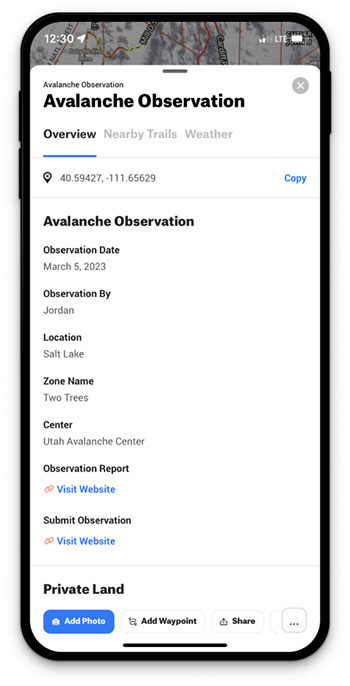
Before you head out into the field, you can get an eye on if avalanches have occurred in your area / similar areas by utilizing the ‘avalanche observations’ feature in onX Backcountry. These observations are vetted and approved by your local avalanche center, and can help you get more perspective on avalanche activity and what elevations / aspects they’re running before you go out into the snow. We currently feature avalanche observations provided by The Northwest Avalanche Center, Wallowa Avalanche Center, Sawtooth Avalanche Center, Sierra Avalanche Center, and The Utah Avalanche Center.
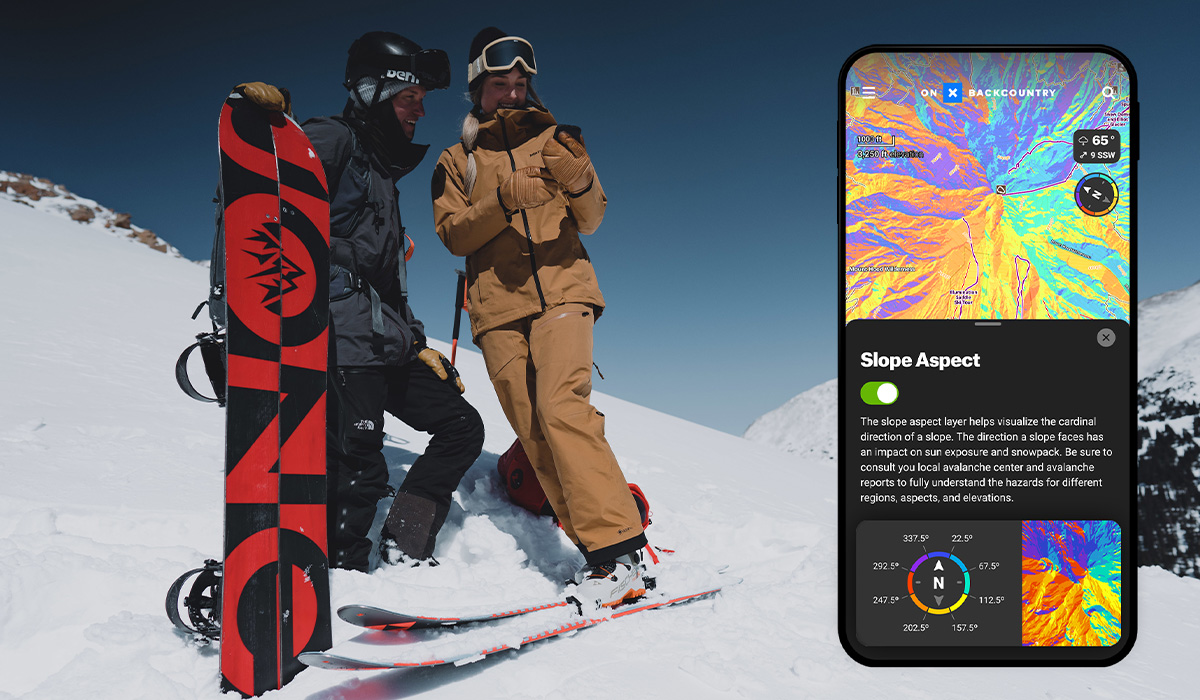
Collapsing or Cracking in the Snowpack
Collapsing or cracking in the snowpack is another indication of avalanche danger. If you hear a loud “whumpf” sound or feel the ground collapse beneath you, this is a sign that the snowpack is unstable and may be prone to sliding.
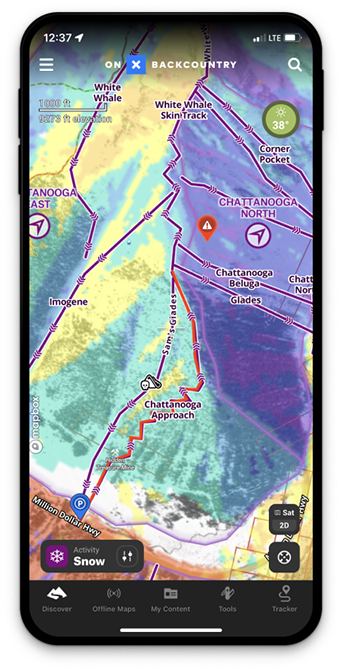
If you experience cracking, collapsing, or ‘whumpfing’ you can use onX backcountry’s slope aspect layer to assign an aspect to your instability observation and create a plan to safely navigate to more stable terrain on another aspect.
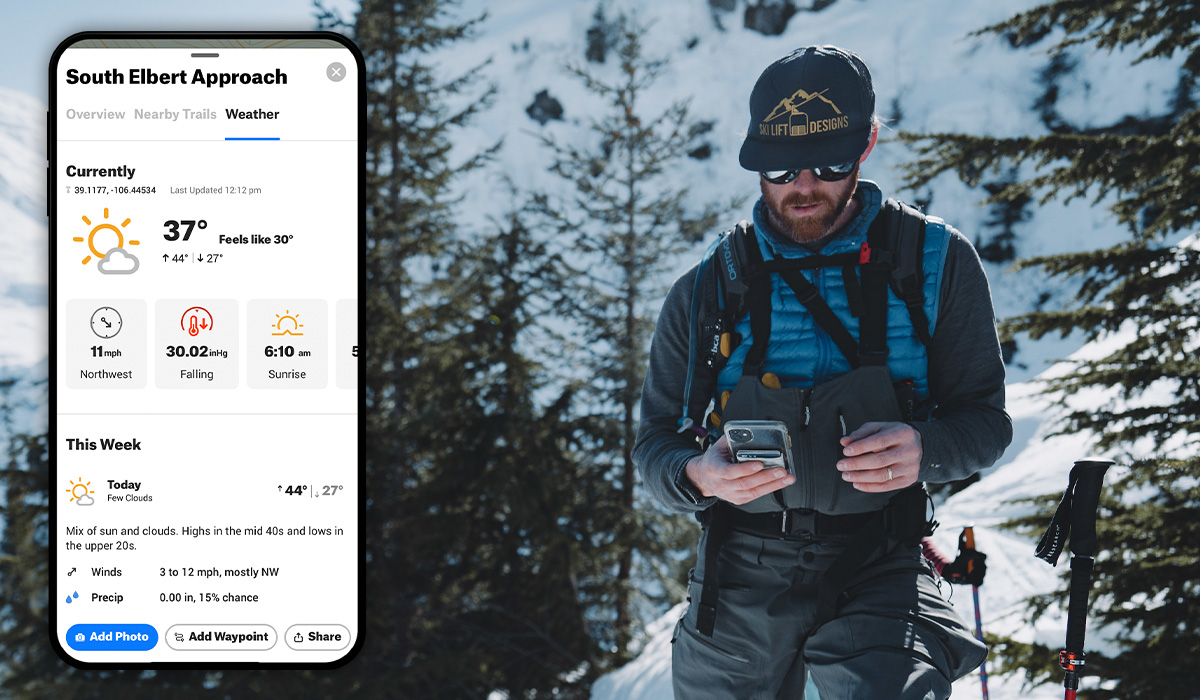
Rapid Rise in Temperature
Rapid temperature changes can also increase the likelihood of avalanches. If the temperature suddenly rises, the snowpack can become saturated with water, making it heavier and more unstable. Conversely, if the temperature suddenly drops, the snowpack can become colder and more brittle, increasing the risk of fractures and slides.
Anticipate the temperature changes of the day by utilizing onX Backcountry’s weather widget. By understanding how cold it will be overnight, and how warm it will be throughout the day, you can plan a window of time that will allow you to time the perfect ‘corn harvest’ and optimal conditions.
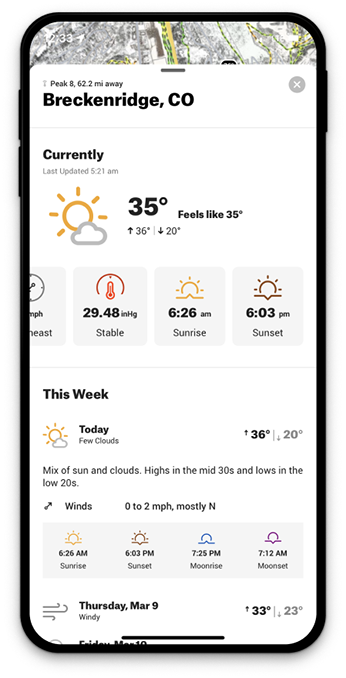
Anticipate the temperature changes of the day by utilizing onX Backcountry’s weather widget. By understanding how cold it will be overnight, and how warm it will be throughout the day, you can plan a window of time that will allow you to time the perfect ‘corn harvest’ and optimal conditions.
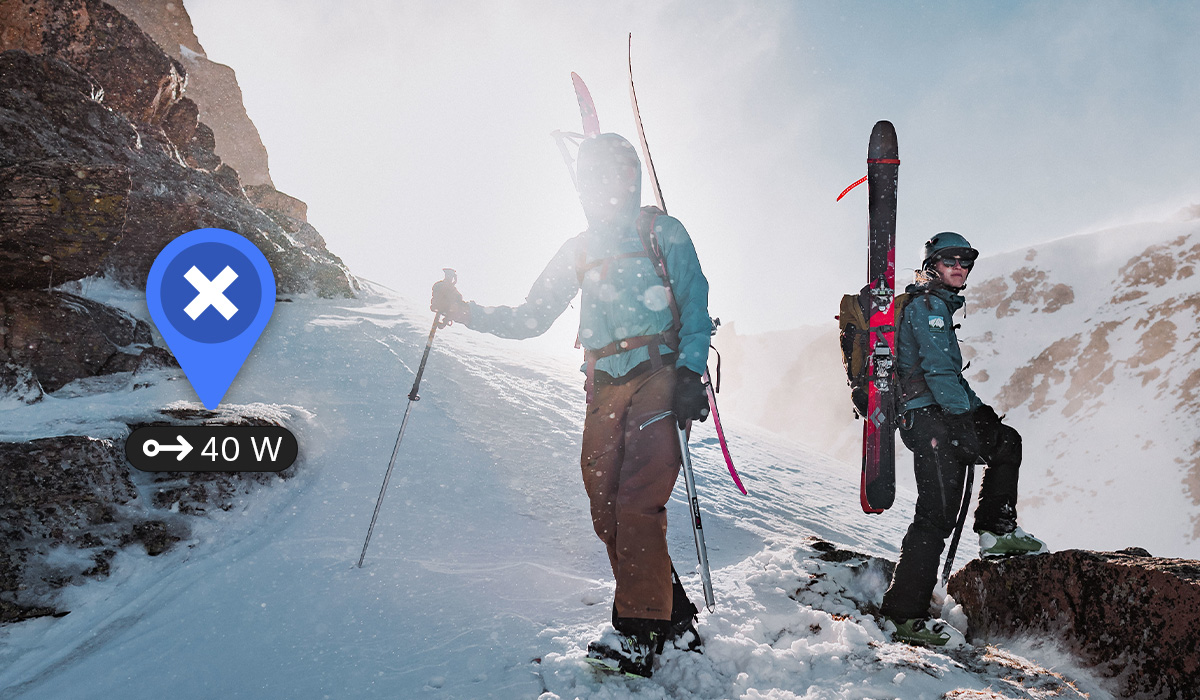
Strong Winds, Blowing & Drifting Snow
Wind can have a significant impact on snow stability and increase the likelihood of avalanches. Wind can redistribute snow across the terrain, creating thick slabs that can easily break and slide. Wind can also deposit snow in areas that are already overloaded, further increasing the risk of avalanche activity.

Utilize the weather widget to view the anticipated wind speeds of the day and which direction the wind will be coming from. Also use the ‘wind on a waypoint’ feature to see wind direction and speed specifically where you will be riding.
It is important to note that these red flags do not always indicate an imminent avalanche. However, if you observe any of these warning signs, you should take them seriously and adjust your plans accordingly. This may mean changing your route, avoiding steep slopes, or even canceling your trip altogether.
In conclusion, knowing the red flags of avalanche danger is crucial for staying safe in the mountains. By being aware of recent snowfall, wind, temperature and weather changes, and signs of instability, you can make informed decisions and reduce your risk of being caught in an avalanche. Remember to always check the avalanche forecast before heading out and to carry the necessary safety equipment, such as an avalanche beacon, shovel, and probe. Stay safe out there!